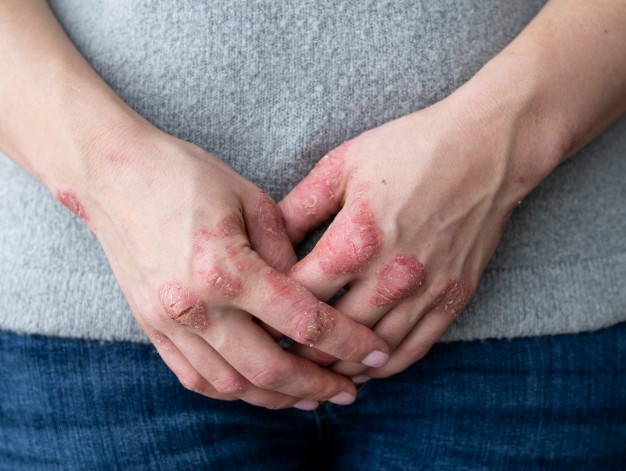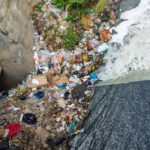
How Can We Deal with Toxic Waste?
Did you know that we produce almost 13 tons of hazardous wastes each second, which compounds to over 400 million tons of toxic waste each year? Yes. Let that sink in.
When someone uses the terms “hazardous waste”, you immediately think of corroding drums with skeleton-stickers, spewing green liquid all over the place. While that train of thought is correct and this scenario does fall under the category of hazardous wastes, there’s a lot more to it than what meets the eye. Keep reading if you want to know about the types of hazardous waste, the risks related to it and how to best deal with hazardous waste materials.
Risks associated with hazardous wastes
Almost any industry involved in any form of manufacturing can contribute to toxic waste generation.
Hazardous waste has a longstanding history of pollution and damaging the environment. Improperly handling toxic waste can harm people, flora, and fauna of a region, irrespective of where it ends, i.e. soil, water, or air.
However, there are several other types of hazardous waste which you may not realize are harmful to our health and environment. Household hazardous waste like batteries, paint, pesticides, and old electronics are some of the leading contributors to the statistics mentioned above.
Since most individuals do not know how to dispose of toxic items properly, a professional junk removal and hauling company, like Junk Junkys, can help with the responsible disposal of hazardous waste. Junk Junkys will take care of packing and labeling waste items, contacting the local authorities, and then disposing of the waste safely in compliance with regulations. Junk Junkys specializes in residential, commercial, construction, E-waste and general waste disposal solutions across the United States.
What are the different ways of disposing of toxic waste?
The “3 R” strategy is one of the most effective ones when it comes to dealing with hazardous waste. Reduce, reuse, and recycle as much as possible after identifying how much waste you generate.
The EPA has identified three different waste generator classes depending on the amount of hazardous waste generated:
- Large Quantity Generators (LQG): More than 1,000kg
- Small Quantity Generators (SQG): 100-1000kg
- Conditionally Exempt Small Quantity Generators (CESQG): Less than 100kg
Each category has a different set of regulations; so ensure that you are well-versed with the federal instructions for safe waste management.
Some other common ways to discard wastes are listed below:
- Incineration: Combustible hazardous wastes that cannot be recycled can, instead, undergo thermal treatment in waste incineration plants. Wastes containing organic pollutants must always undergo a separate thermal treatment process. The best part of this waste disposal system is that the heat released can be used to generate electricity.
- Landfill: Based on the requirement and type of waste, hazardous waste materials can also be sequestered in a permanent disposal facility or waste landfill.
- Chemical, physical and biological treatment: This process makes landfilling far safer as it removes the pollutants from the waste.
What constitutes toxic waste? Hazardous stuff you might be using and storing
In simple terms, toxic waste refers to any item that has served its purpose, but the remains pose a risk to human and environmental health. Earlier, such wastes were loosely regulated, which resulted in several disasters in the course of history.
Since 1976, the Environmental Protection Agency (EPA) has looked over toxic waste proceedings and now requires hazardous waste to be disposed of in designated facilities only.
There are 5 categories of hazardous waste, which are discussed briefly below.
- Listed waste
The EPA has identified and categorized toxic waste into three lists, i.e. F-list, K-list, and P-list and U-list. Wastes on the F-list originate from standard industrial processes across multiple sources, often referred to as non-specific source waste.
Waste items on the K-list include sludge and wastewater from petroleum and pesticide manufacturing factories. Finally, waste items on the P-list and U-list contain commercial chemical products discarded in their unused form, i.e. they become hazardous when discarded.
- Characterized waste
Several waste materials are not included in the lists above, which are classified as hazardous if they meet one of the characteristics mentioned below:
- Combustibility: Items spontaneously combustible at or above 140-degree Fahrenheit.
- Corrosivity: Items with pH below 2 or above 12.5.
- Reactivity: items unstable under STP (standard temperature and pressure). These materials are often explosive when heated, compressed, or if they come in contact with water.
- Toxicity: Items that are lethal when absorbed or ingested by humans, animals, or plants.
- Universal waste
This category of wastes includes regular household materials, which may not seem hazardous at first but can lead to environmental pollution. Some of the items in this category are:
- Fuel
- Pesticides
- Fluorescent light bulbs and lamps
- Mercury containing equipment
- Cleaning chemicals
- Paints and varnishes
- Pool chlorine and acid
- Mixed waste
This category consists of both radioactive and hazardous materials, usually generated as commercial by-products. While nuclear power-plants are among the most common sources of mixed waste, others like pharmaceutical production, medical and alternate energy industries also generate low-level radioactive waste.

- Electronic or E-waste
An alarming growth has been seen in the electronic waste category, which comprises of old and damaged electronics. This list includes old TVs, computers, scanners and printers, refrigerators, ovens, toasters, etc. Most of these appliances contain parts that can release harmful radiations and harm the environment.
Residential and Commercial – Both Places are at Risk with Wastes Piling at Premises
As shown in the lists above, both commercial and residential areas are at the risk of harmful waste accumulation. More often than not, people leave toxic materials unattended citing that they’ll deal with it later, only to forgetting about it altogether.
So, many residential complexes and commercial factories have started maintaining a designated hazardous waste storage area. This region contains specialized drums or boxes which can prevent harmful toxins or radiations from leaking into the environment until proper authorities take care of it.
However, a stitch in time saves nine. Such areas should be inspected routinely, and any change (good or bad) should be documented in a logbook for future references. Identifying any fault early on can prevent mishaps down the road.
How can hazardous waste affect us?
Hazardous wastes can affect humans, animals, plants, and the environment at large in several ways. For example, these wastes may cause skin and tissue irritation, headaches, breathing issues, etc.

However, in extreme cases, these can cause far severe health disorders, like tumor and cancer, mutations, behavioral changes, deformations and congenital disabilities, and organ system failure.
The impact of hazardous waste on the environment is just as devastating as in human communities. If improperly discarded, such wastes can hamper the health of entire population in a contaminated habitat. Scientists have reported that organisms with significant reproductive complications severely hamper their potential to survive in an ecosystem.
Some substances have a more visible effect, as they can explode and lead to fires, spreading and harming animal and human populations alike.
The most straightforward approach to guaranteeing environmental-friendly removal of toxic waste is to contact and cooperate with a professional junk cleanup and waste disposal company. Such agencies are well-versed with the state and government guidelines (such as EPA-mentioned release quotients) to take care of and dispose of hazardous wastes efficiently.
Reference links:
www.epa.gov
www.nationalgeographic.com
www.ercofusa.com


erotik
March 2, 2021 at 3:05 am
I blog often and I really appreciate your content. Your article has truly peaked my interest. I will take a note of your blog and keep checking for new information about once per week. I opted in for your Feed as well. Vinita Geno Justinn
cialis 100 mg 30 tablete
March 5, 2021 at 7:06 am
Highly energetic blog, I liked that bit. Will there be a part 2? Maia Saxon Gennifer